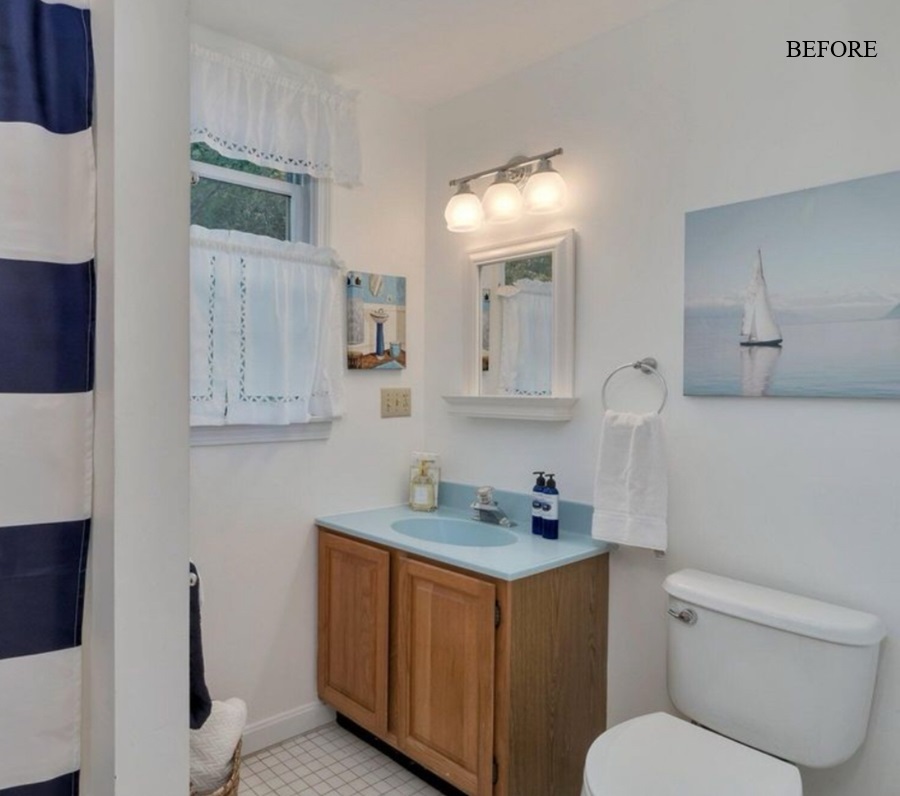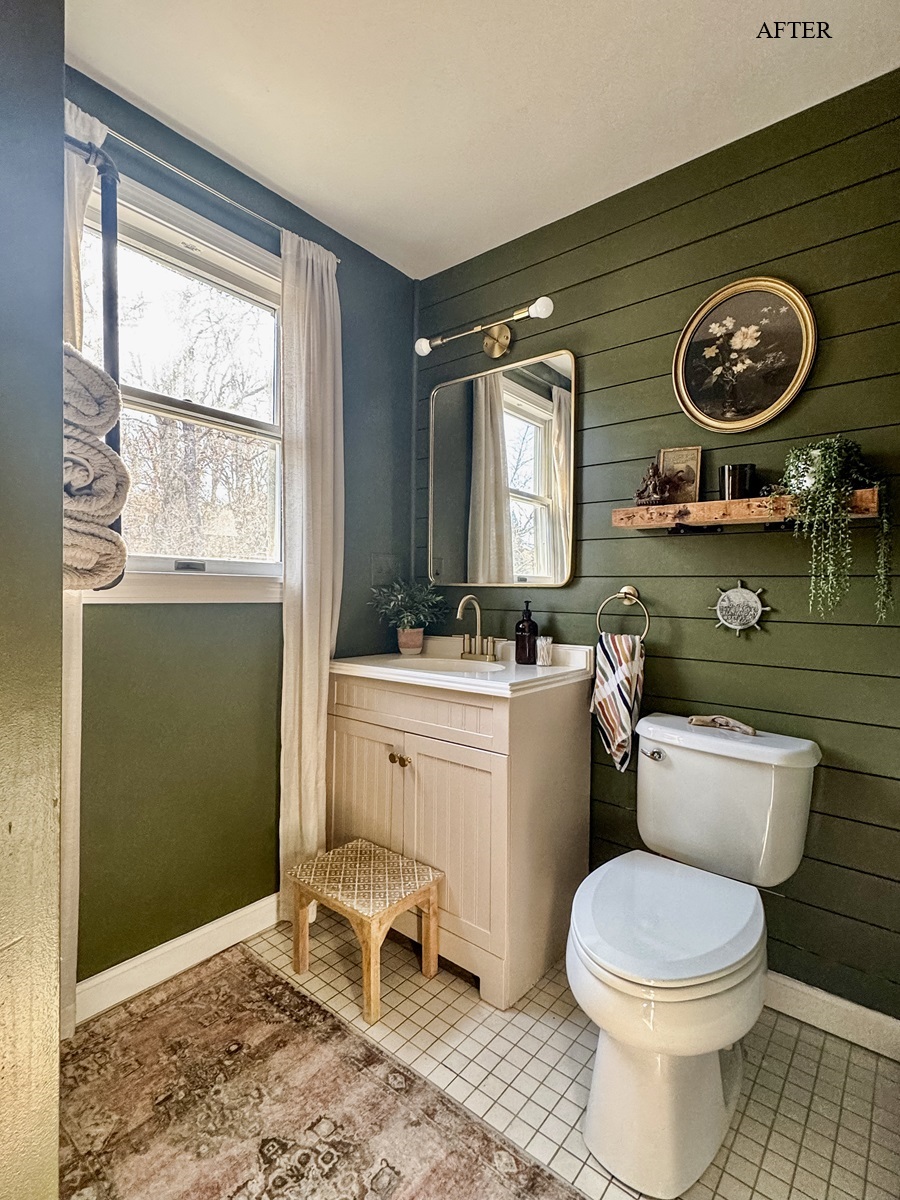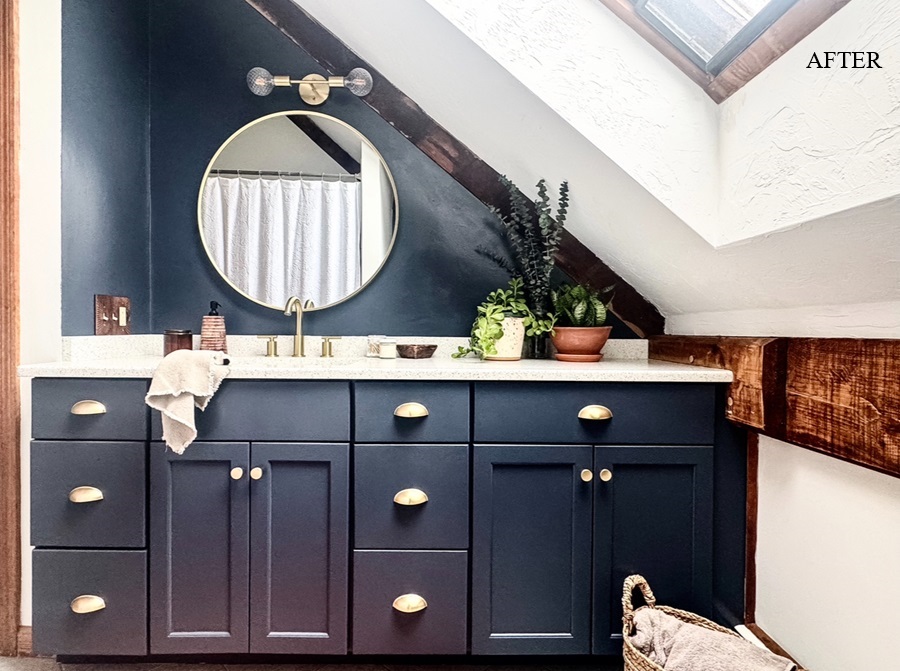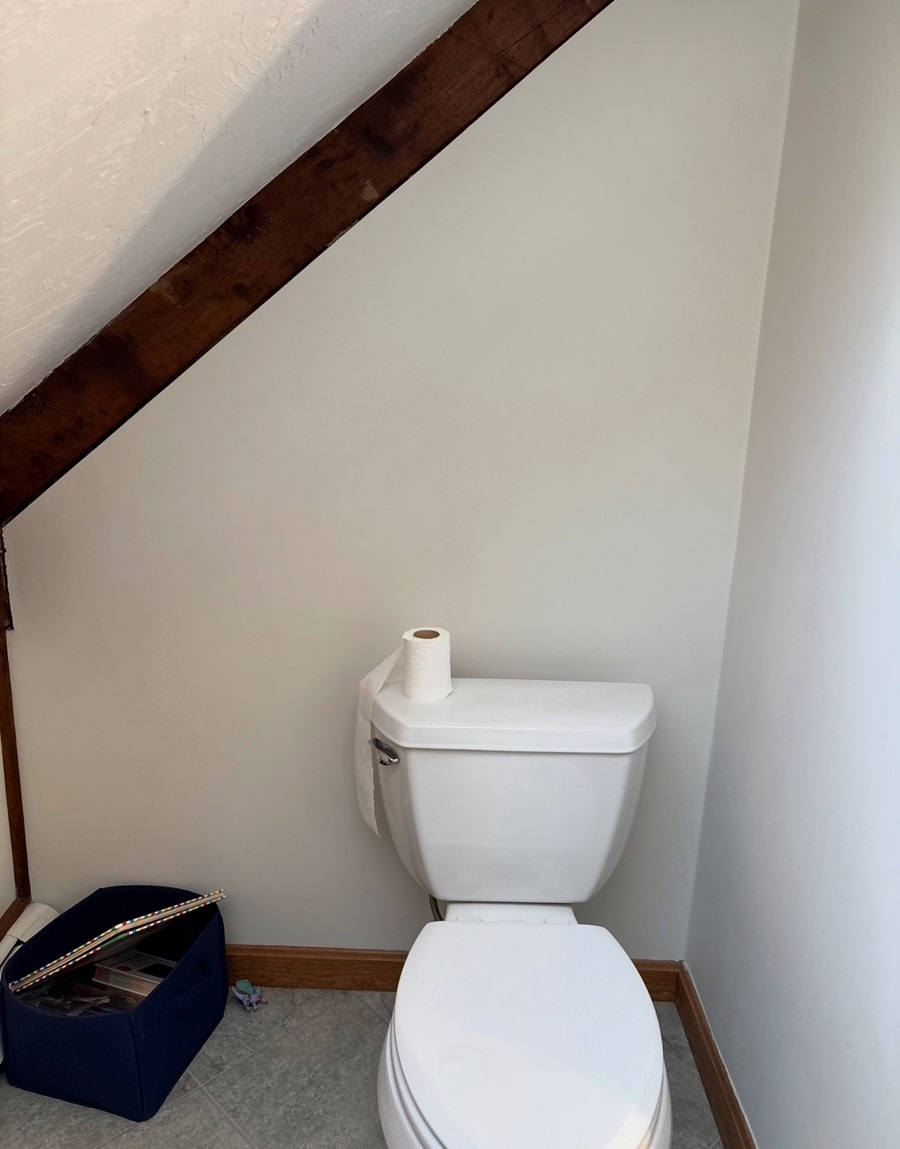Kids’ bathrooms are surely not at the top of most people’s home-improvement wish lists. As long as it’s a room that’s functional and ready to withstand some wear and tear, you leave it alone: whatever the decor, its users aren’t complaining.
On the other hand, I did notice how the utilitarian white box of a bathroom my children shared was not exactly cozy — not for them or for me. Stopping in on their daily morning and evening routines, I realized that its spare, clang-y brightness was setting my teeth on edge.
Here’s where one of the easiest, most affordable changes you can make can also be the most rewarding. You’re not going to find a dark, earthy green in a paint-store brochure on palettes for a children’s bathroom, but it really works some magic: green balances warm and cool, and here a deep, woodsy shade feels clean and puts us all in a tranquil mood.


I was encouraged to make a similarly bold color change on another project soon after finishing this one. In a client’s upstairs bathroom tucked under the eaves, deep navy lends a crisp but calm feel that’s ideal for the space. Bringing the color from the walls through to the cabinetry made the space seem less cramped.
There’s no theme to these revisions — those are easily outgrown. I did add some small touches that are nods to the seaside location of these homes. Before painting, I nailed horizontal nickel gap (it’s similar to shiplap but with a cleaner look) that I picked up at a local lumberyard to accent one wall in the green room. And gold hardware on the navy is a classic maritime combination.
In both cases, completely replacing the bathroom vanities with new ones would have put me over budget. Painting bathroom cabinets makes the transformation just as effectively and doesn’t require plumbing changes. I first lightly sanded the vanities, then applied a high-quality primer, and finished with a few coats of semi-gloss interior paint.


In the attic room, the countertop was white with flecks of gray and light blue. Introducing the darker blue paint color worked fine there. In the green bathroom, however, the ice-blue counter and sink were going to be hard to work with. Here, a gently used all-white vanity, sourced from a local online marketplace group, was an inexpensive starting point. A fresh coat of warm beige paint on the cabinet, modern gold knobs, and a simple swap out of the faucet make the vanity less stark. It belongs in the room like a familiar piece of furniture.
Larger mirrors and sleeker gold-toned fixtures warmed up the quality of the light in both rooms. Adding an open-weave curtain softens the edges of the green room. A big friendly houseplant does the same for the nook in the attic space.


Looking back, it’s easy to see how these two previously pale children’s bathrooms seemed to glare unnervingly. Their new deep color values are still vibrant, but these are now more comfortable spaces — as they should be. Besides, though there’s nothing fancy or impractical here, the rooms now bridge the gap between being spaces for children and welcoming rooms for the adults who end up spending plenty of time in them.
